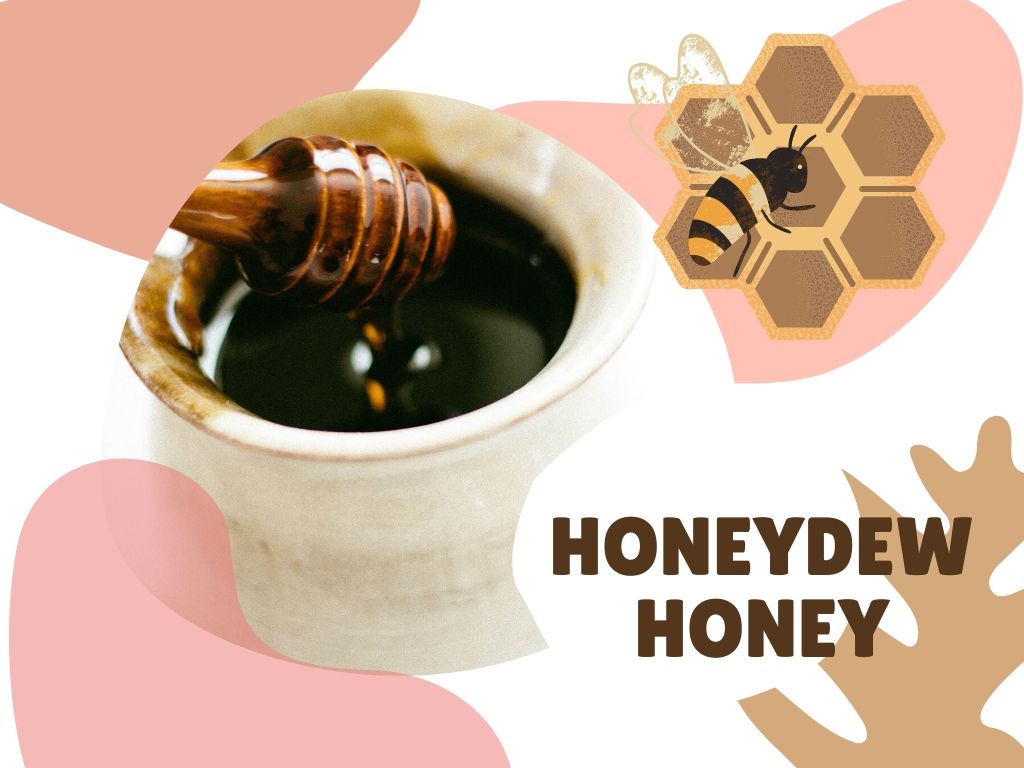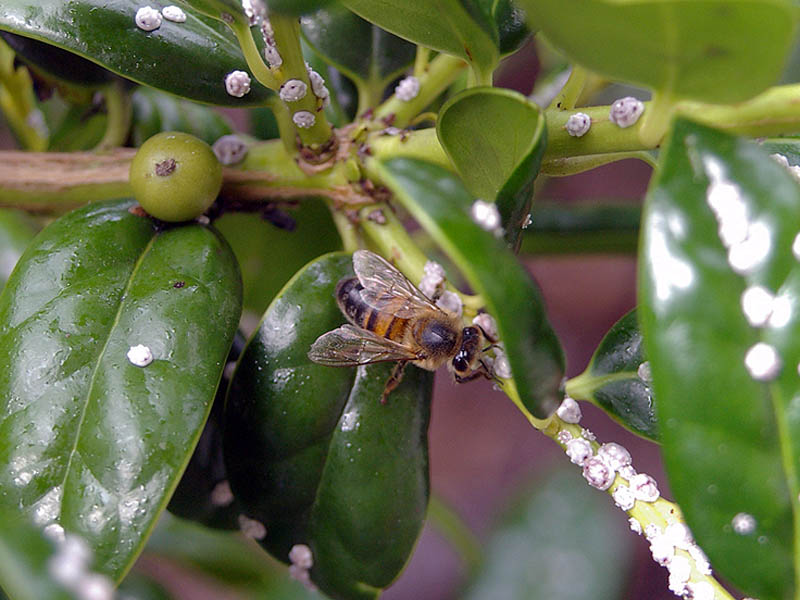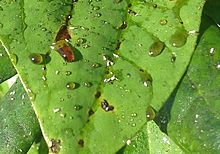What is honeydew honey?
Honeydew honey is a type of honey that is made when the bees bring home the nectar they gathered from their outings. This particular type of honey comes form the secretions of bugs, usually aphids that are found on leaves, branches, tree trunks, and underneath trees. It is formed from the sap of the tree or plant. In this article we’ll look at various honeydew honey health benefits.

While bees are out collecting nectar to take back to the hive they gather the honeydew as well, either intentionally or not, and make honey with it. This type of honey is not overly sweet and has no bitterness. It is used by the bees in the same way that nectar from flowers is used, and sold as honeydew honey or forest honey. It has a slightly different flavour then other types of honey, and will age well with less crystallization then some others. As more is learned about the properties of honeydew honey it’s uses are expanding into skin care and health food applications.
How is honeydew made?
Honeydew is created when small bugs, and even some small lizards in warm areas, drink the sap of the trees. Their bodies pull out all the nutrients that they require from the sap and then expel the rest. As the protein levels in the sap is very low they must drink a lot of the sap, and as they keep drinking it pushes the sap out the other end of the bug, leaving behind a trial of honeydew.
This sap will have all the nutrients except a few amino acids that have been consumed, and the sweetness and sugary content can attract bees and other small bugs and mosquitos. Bees, honey bees, wasps, mosquitos, and some of the small birds are all attracted to the honeydew and will find it to consume.
It can also drip off the leaves and trees onto vehicles and things like garden furniture, proving sticky and difficult to remove from a vehicle. Some flying insects will collect the honeydew and take it back to feed their own larvae. Sap itself can not be used to make the same honey, as the process removes some amino acids and changes the substance of the sap into the honeydew itself. This is then processed by the bees and turned into honey.

As the honey is created from the sap of trees, it has many other names that differentiate it from other honey. It is also referred to as tree honey, forest honey, or even by the name of the tree that that it originated from such as fir, pine, or others such as date trees or eucalyptus, chestnut trees, willow, white poplar, and beech. Occasionally cotton plants and sunflowers will also produce a honeydew.
Sometime there is an overflow of sap that continues after the bug has moved on, and this is called the manna. It is a sugary layer that will coat an area of the tree or the leave, and attract not only flying insects and birds, but other small animals as well. The sweetness is very attractive to these animals and insects, and they may consume it, take it back to their nest, hive, or home, and may even feed it to their own larvae or babies to help them grow.
Some bees will search out the honeydew intentionally, while others will come across it while they are gathering nectar from other plants and flowers. They will consume it and mix it with their own secretions, then store it in their honey stomach to take back to the hive, just as they would nectar from any flower. There it is regurgitated into the hive and used for creating honey. The honey is then collected like any other honey, and will be treated just like any other honey, but labelled as honeydew honey.
Characteristics of honeydew honey
This specific honey will have its own colour and taste. It is shaded in a warm golden like most other honeys, with a medium level of sweetness, and will form crystals slower then other honeys because of the lower water content found.
Due to the origin of the honeydew, this particular honey has been described as a woodsy smell and taste, or as having earthy flavour. It will store well without crystalizing quickly, remain sweet, and has many uses.

Honeydew honey health effects
The high antibacterial content, due to the content of the ingredients, makes it a wonderful addition to any diet and even on the skin. Honeydew honey health benefits, especially it’s antibacterial properties make it well suited to uses on skin irritations or even small burns or cuts.
In addition to antibacterial it also has a high antioxidant content. That makes it not only healthy to consume, but also for skin care and hair care. It will help to maintain a healthy glow to the skin while decreasing the likelihood of outbreaks caused by bacteria build up on the skin as well as helping the skin cells grow and repair themselves after any damage. This helps to keep skin looking younger and healthy no matter the age of the person using it.
As antibacterial foods are consumed they can help the body fight off minor illnesses and infections, and honey is often recommended for a cold or cough due to its ability to coat the throat. By coating the throat it reduces irritation and the increased antibacterial properties of honeydew honey make it especially well suited for this purpose. It can help to hinder the bacterial reproduction and growth.
Honey is a great option to replace sugar in many recipes due to its sugary base, but lack of additive and additional sugars. Combined with the honeydew honey health benefits it is a much better choice when substituting out a white sugar. These benefits may be found to help reduce pain levels, aid in weight loss as a substitute for other sugars, and also reduce the growth of unwelcome bacteria on and in the body.

Where does honeydew honey come from originally?
Honeydew honey is often found in New Zealand and other similar climates. It is collected, processed, jarred, and shipped all over the world. It can be distinguished from other honeys both by where it is made and the name that it is sold under.
Fir honey, forest honey, chestnut, are all forms of honeydew honey that is being sold under the name of the trees it was made from. This is the fastest way to determine what type of honey you are purchasing, and there will be a place on the label for where it was made.
As this honey can have a negative affect on the bees over the winter, by not supplying their nutrient needs and can even make the bees ill. For this reason the hives and homes but all be cleaned out before winter, and the bees must be provided a supplement during the year. This can cause it to be a bit more expensive then some other honey products, but the benefits can outweigh that.
Summary: Honeydew honey health benefits
Honeydew honey is a specific type of honey that is made not from the nectar of flowers but form the honey dew found on trees, leaves, and sometimes sunflowers and other plants.
It is formed when the insects, bugs, or even some small scaled animals, consume the sap from the plant. This sap is processed through the body and all the necessary nutrients are removed it is pushed out by the consumption of more sap. As the sap passes through the insect it leaves a trail behind of sweet, shiny honeydew, and any that leaks out of the plant afterwards leaves a coating of manna on the leaves or branches, which will attract animals to it’s sugary treat.
When the honeydew drips onto a car or other surface it will be extremely sticky and can be very difficult to remove. Bees enjoy the sweetness of the honeydew and will consume it as they do nectar, storing it in the honey stomach until they get back to the hive. There they regurgitate it just as they would any other nectar and leave it for other bees to form it into honey. This causes it to be mildly sweet in flavour, and can have a wood type smell and taste that is very natural and enjoyed by many.
Due to its root ingredient it is also higher in antibacterial and antioxidants then other honeys and is growing in popularity in health foods and even some treatments. When shopping this honey can be picked out by its colour, warm amber, as well as the labelling of honeydew honey, forest honey, or it may be named after whatever other tree the honeydew came from.
